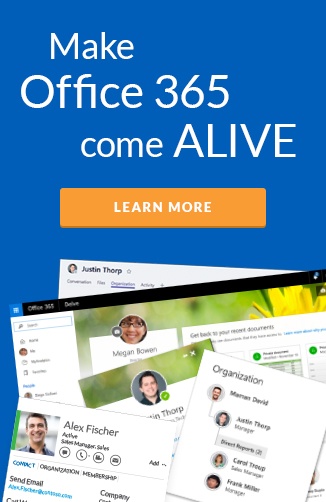The previous blog in our process management series explained why people information is crucial to effective organizational workflows. This blog lists the biggest challenges for workflows with bad people information, so you can avoid their associated problems in your organization.
54% of employees in U.S. companies of over one thousand employees find broken administrative processes within their organization, according to Nintex’s Guide to America’s Most Broken Processes. The areas where processes break down are varied – it may be the locating and sharing of documents, signing and approving of contracts, or inputting into a system of record. The impact of broken processes is equally varied – effecting workers, teams, the broader company and customers alike.
An integral yet often overlooked component to the success or failure of workflows is people information.
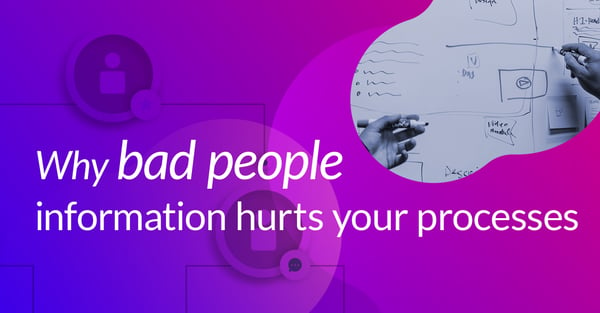
What is people information?
People information is the information that populates user profiles, so workers know who’s who in the business. Information includes names, job titles, and contact numbers/addresses, skills and expertise. Platforms like Office 365 will also include the people and documents you work closely with to provide colleagues with a more complete sense of how you get work done.
If people information is bad, you can expect the processes that rely on that information to suffer also. A lack of out of date employee profiles and a defined organizational structure can cause workflows to unintentionally send documents to the wrong people.
What is organizational structure?
Your organizational structure – displayed in organizational charts – shows the roles and relationships of employees at a glance. Org charts help workers find relevant colleagues quickly and easily when they need them and reduces the likelihood of accidentally sending files to someone without the necessary viewing or editing permissions.
This blog details four challenges apparent in workflows that contain bad people information, so you can see whether they exist in your organization and find out how to fix them.
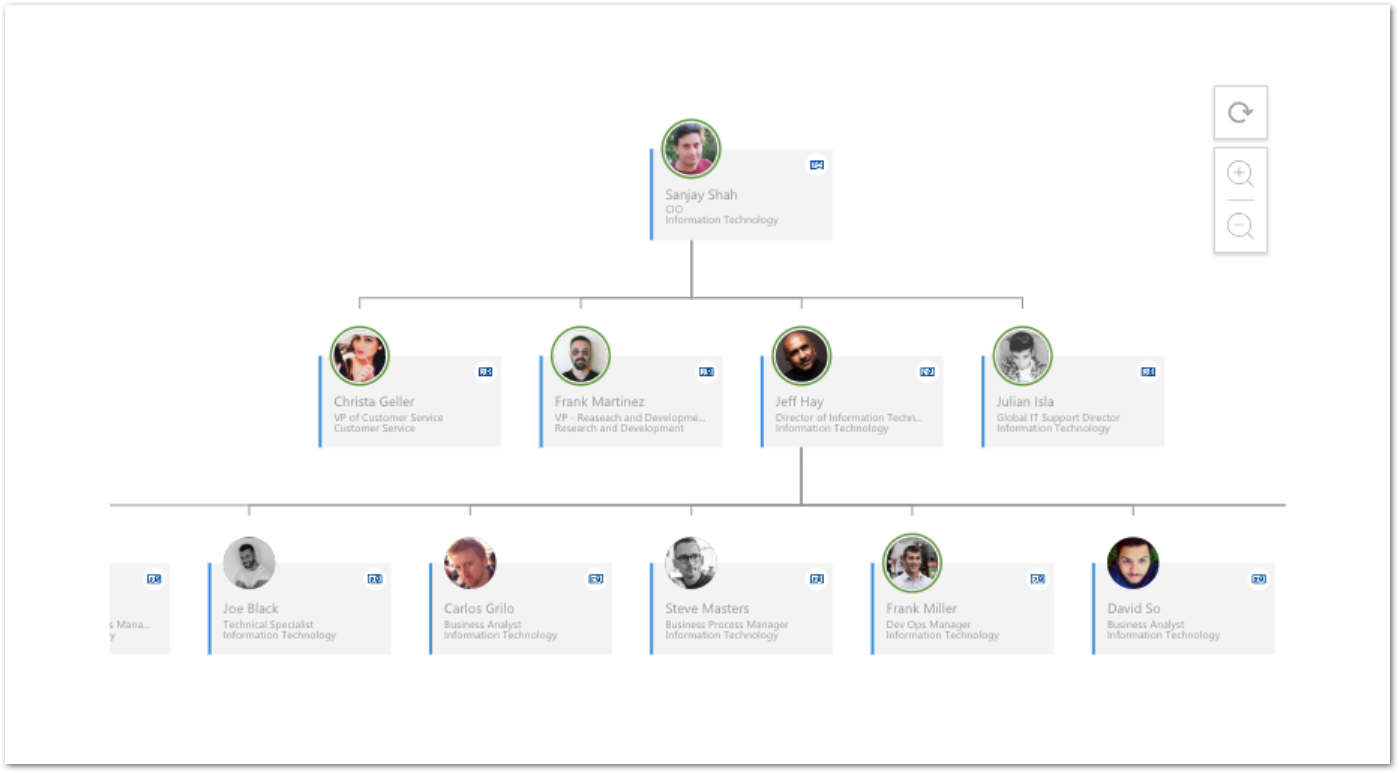
Four core challenges of bad people information
- Lost opportunity
Organizational charts provide a documented structure for how documents, data, and conversations move around the organization. Remove this structure and it’s much harder to define internal processes and streamline communications. It may be unclear where documents should be sent.
It could be a new employee isn’t properly onboarded, making it harder for them to find the people and information they need to get going. It could be a new contract going to the wrong salesperson for approval, slowing down how long it takes for the contract to be signed and confirmed. When working with fine margins, these problems can be the difference between a new customer or another lost lead; an employee becoming a valued member of the team or leaving for a competitor.
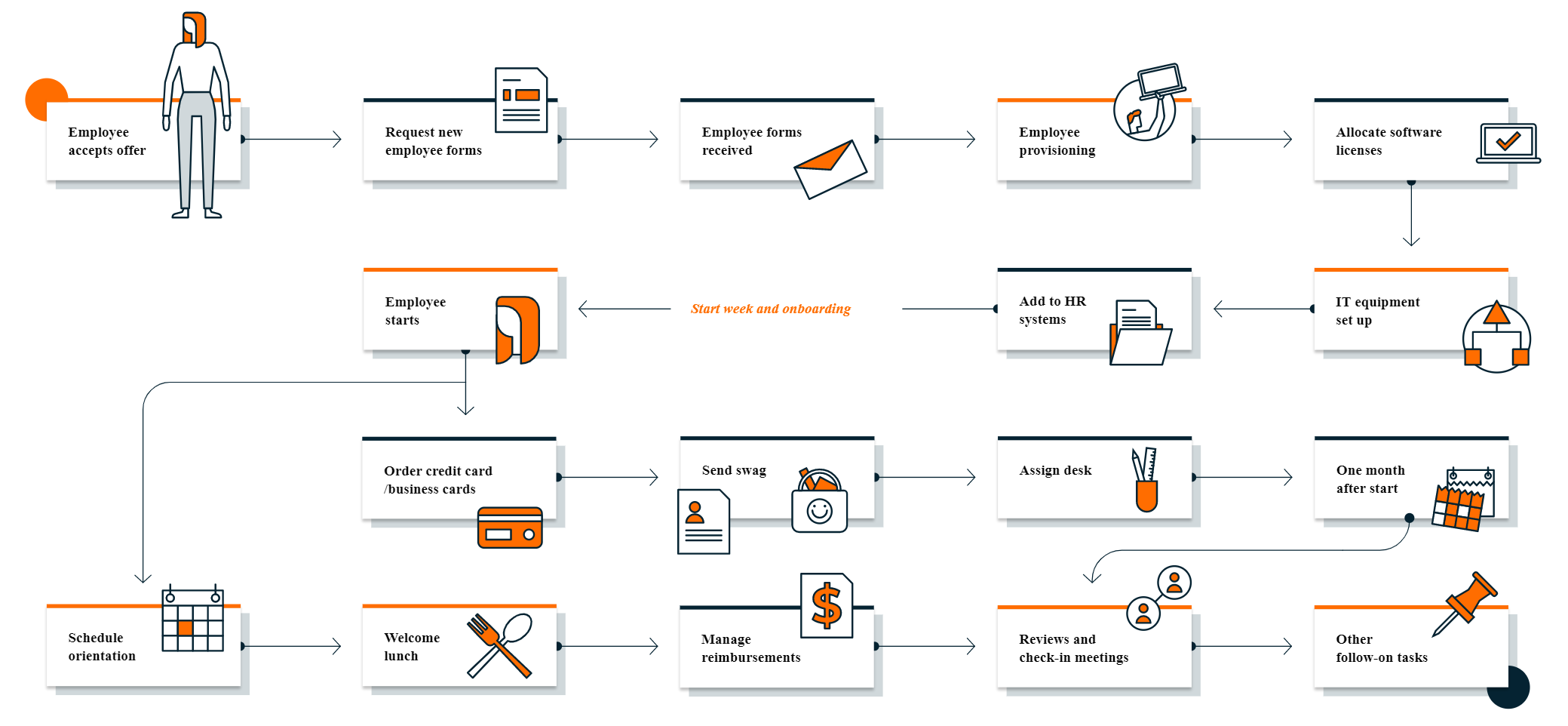
Nintex - Employee Onboarding Workflow Process Diagram
- Lost time
When was the last time you got an email sent to you by accident? In such a situation, most of us choose to ignore it. It might not seem like a big problem at the time, but if that email includes an important document – an expense report, a sales proposal, a performance review – it going unnoticed can create delays. It will take additional time to find the actual location of a file. And lost time ultimately means lost money.
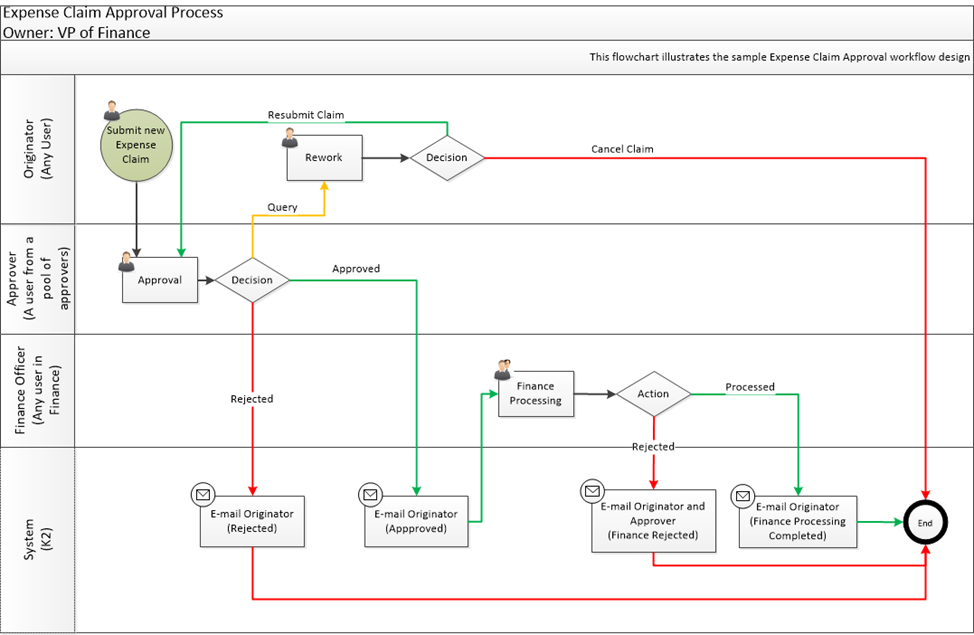
Expense Claim Workflow using K2
- Confidentiality breach
The majority of employees might just ignore an email that is sent to them by accident. But if that document contains sensitive information – an unprotected payslip, an expense report, HR disputes, etc. – there’s a chance that someone will see something they don’t have permission to view. In this case, the issue gets more complex and it takes more time, money, and effort to fix the situation. When it comes to data security, you can’t let things slip through the cracks.
- Employee dissatisfaction
Workflow automation can remove the repetitive, mundane elements of tasks, but there will always be some level of human interaction required. And where there is human interaction, there is the risk of delays. Employees that must wait on approvals to get on with their work – leave requests, expense reimbursements, performance reviews, to name a few – are more likely to experience downtime, which can hurt satisfaction.
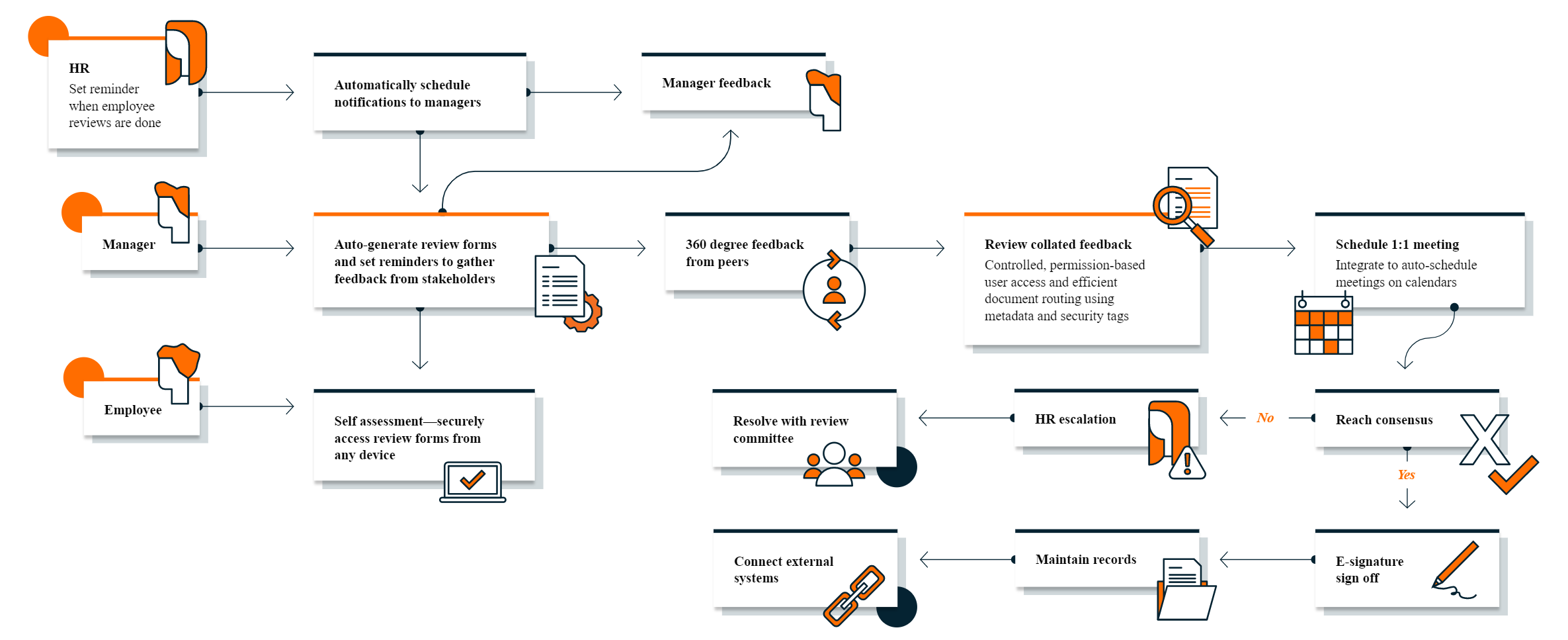
Nintex - Employee Perfomance Review Process Diagram
Power to the people
Process automation is designed to make the flow of work quicker, more streamlined, and more effective. To do so, you need to make sure workflows are designed and built in the correct way. And to do that, you need to ensure your people information is up to date and accurate at all times.
Don’t let bad people information negate the hard work you’ve put into your business processes. A self-updating employee directory and organizational chart can remove bad people information that negates the benefits of automated processes. This doesn’t have to require more work – the process of creating and maintaining accurate employee information can be automated.
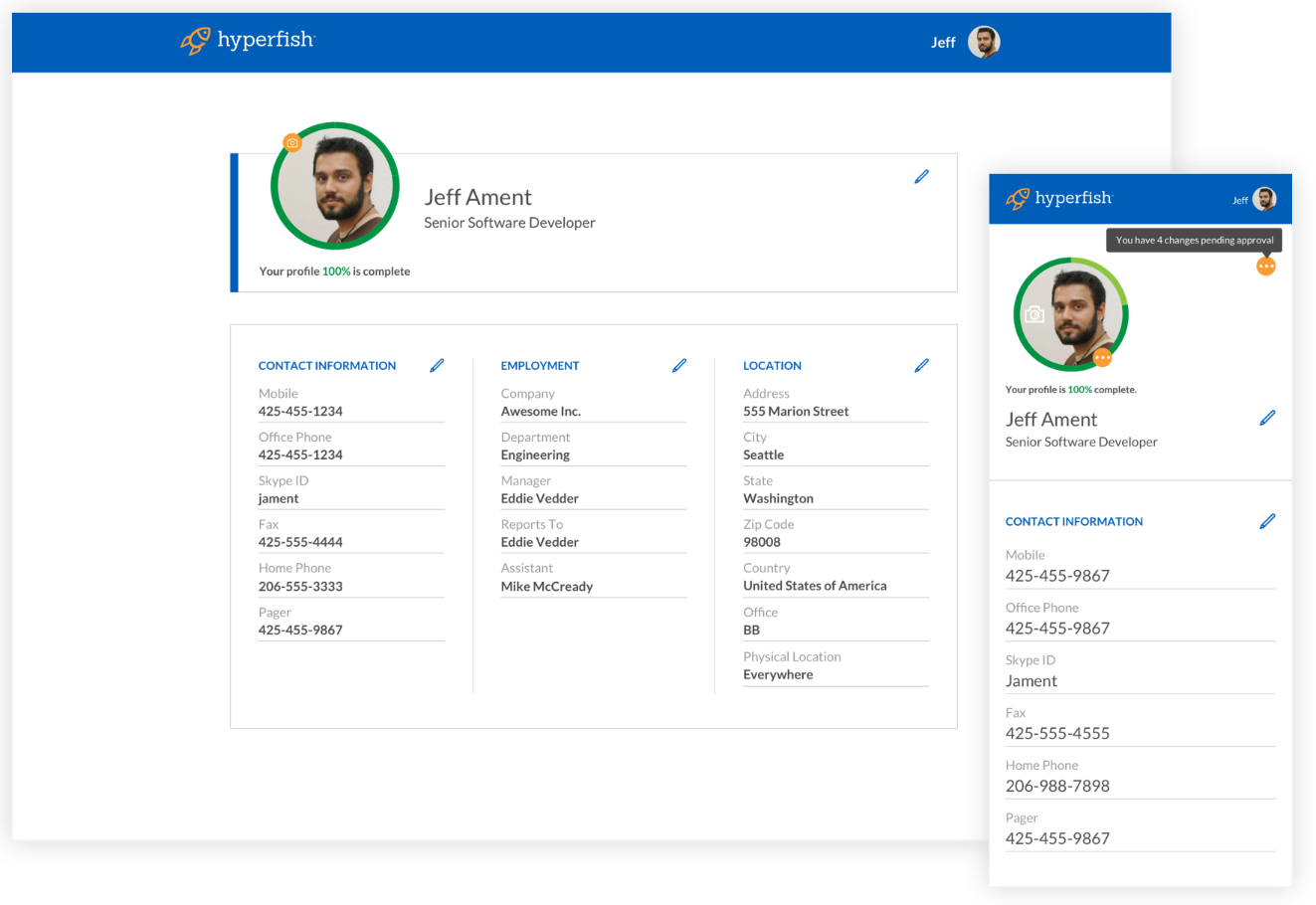
Hyperfish makes maintaining accurate employee profile information easy. It uses AI technology to keep profile information up to date, scanning your employee directory to indentify inaccurate and missing information. Whether it’s a name, date, job role, or profile picture – Hyperfish can automatically notify employees to update their profile. Giving you the peace of mind that comes from knowing that your people information is always up to date.
For more information on how Hyperfish can improve people information in your company, without the extra legwork. Get your free demo and get started right now!

